Traditional Costumes of Asia – Part 2: India, Uzbekistan, the Philippines, and Indonesia
Discover the traditional costumes of Asia in this second part: the Indian sari, the Uzbek chapan, the Filipino barong tagalog, and the Indonesian kebaya. Elegance, history, and cultural heritage all come together.
BLOG GÉNÉRAL
9/2/20256 min read


Traditional Costumes of Asia – Part 2
After exploring the iconic costumes of Japan, Korea, China, and Vietnam, let’s continue our textile journey across Asia. This time, we head to India, Uzbekistan, the Philippines, and Indonesia—four countries whose traditional costumes embody both cultural richness and national identity.
1. The Indian Sari – Radiance and Diversity
Origin: an ancient garment worn by women in India.
Symbolism: femininity, grace, cultural identity.
Occasions: weddings, festivals, religious ceremonies.
Distinctive feature: a long piece of fabric draped around the body.
Origin
The sari dates back more than 5,000 years to the Indus Valley civilization. Mentioned in ancient texts and depicted in sculptures, it has continuously evolved while remaining deeply tied to Indian culture. Each region developed its own weaving techniques, motifs, and draping styles, making the sari a symbol of unity in diversity.
Symbolism
More than just clothing, the sari represents femininity and elegance. Its colors and patterns often carry specific meanings: red for marriage and prosperity, yellow for celebration and spirituality, white for purity. Embroidery and ornamentation vary according to caste, family traditions, and regions.
Occasions
Today, the sari is still essential for weddings, festivals like Diwali, and religious ceremonies. In some areas, it remains part of everyday life, a testament to a living and vibrant tradition.
Distinctive feature
A sari is a length of fabric, usually 5 to 9 meters long, draped around the body in various styles. Worn with a fitted blouse (choli) and a petticoat, it embodies the art of draping and India’s rich textile heritage.
2. The Uzbek Chapan – Legacy of the Silk Roads
Origin: a traditional coat worn in Central Asia for centuries.
Symbolism: hospitality, prestige, the identity of nomadic peoples.
Occasions: festivals, weddings, religious ceremonies.
Distinctive feature: a long coat, often made of silk, with colorful patterns.
Origin
Uzbekistan, a historic crossroads of the Silk Roads, gave rise to the chapan, a traditional coat worn by both men and women. Its nomadic roots are reflected in its practical cut, designed to protect against the varied climates of the steppes and deserts.
Symbolism
The chapan conveys identity and dignity. The more ornate and richly embroidered it is, the higher the social status of its owner. Offering a chapan is also a sign of respect and friendship, deeply rooted in Uzbek culture.
Occasions
The chapan is worn during weddings, national celebrations, and religious festivities. Those belonging to dignitaries are especially lavish, often embroidered with gold or silver threads.
Distinctive feature
Made from cotton or silk and often lined with wool for winter, the chapan features geometric patterns and bright colors that reflect Central Asia’s enduring textile artistry.
3. The Filipino Barong Tagalog and Baro’t Saya – National Elegance
Origin: traditional formal wear of the Philippines.
Symbolism: national pride, simplicity, dignity.
Occasions: weddings, official events, national holidays.
Distinctive feature: lightweight, sheer shirts often richly embroidered.
Origin
The barong tagalog emerged in the 16th century during Spanish colonial rule. Worn by the Filipino elite as a garment of distinction, it also became a symbol of cultural resistance, as it was worn without a jacket—unlike the European dress code imposed at the time.
Symbolism
Recognized as the national attire of the Philippines, the barong embodies simplicity, elegance, and pride. Its delicate embroidery often features nature, flowers, and cultural motifs unique to the islands.
Occasions
The barong is worn at weddings, official ceremonies, national holidays, and state receptions. It is an outfit of honor and prestige, worn by presidents as well as ordinary citizens on solemn occasions.
Distinctive feature
Made from natural fibers such as abaca or piña (pineapple), the barong is lightweight, semi-transparent, and intricately embroidered. Worn without a jacket or tie, it reflects tropical elegance and cultural identity.
💡 Note: The Baro’t Saya
For women, the counterpart to the barong is the Baro’t Saya, an ensemble consisting of a blouse (baro) and a long skirt (saya). Often embellished with fine embroidery and completed with a scarf (pañuelo) or belt (tapis), it reflects both modesty and feminine grace. Like the barong, it is worn on national holidays and official ceremonies, symbolizing the richness of Filipino cultural heritage.
4. The Indonesian Kebaya – Grace and Refinement
Origin: a traditional garment of Indonesia, influenced by regional exchanges.
Symbolism: femininity, nobility, cultural heritage.
Occasions: weddings, official ceremonies, religious festivities.
Distinctive feature: a fitted lace blouse worn with a sarong or batik.
Origin
The kebaya appeared in Indonesia during the Javanese kingdoms and was influenced by trade with India, China, and the Middle East. Long associated with aristocrats and royal courts, it later spread throughout society while maintaining its prestige.
Symbolism
The kebaya symbolizes femininity and refinement. Its delicate lace and fine embroidery express elegance and nobility. In some regions, it is still tied to tradition and respect for ancestors.
Occasions
The kebaya is worn at weddings, religious festivals such as Eid, and official ceremonies. Indonesian women also wear it on Kartini Day, honoring feminist icon Raden Adjeng Kartini.
Distinctive feature
The kebaya is a fitted lace blouse worn over a sarong or batik. Its cut accentuates the feminine silhouette, while colorful fabrics and traditional motifs add uniqueness to each outfit.
✨ With this second part, we once again see how Asia expresses identity and elegance through unique garments. From the Indian sari to the Indonesian kebaya, each costume tells a story, embodies a culture, and preserves a heritage.
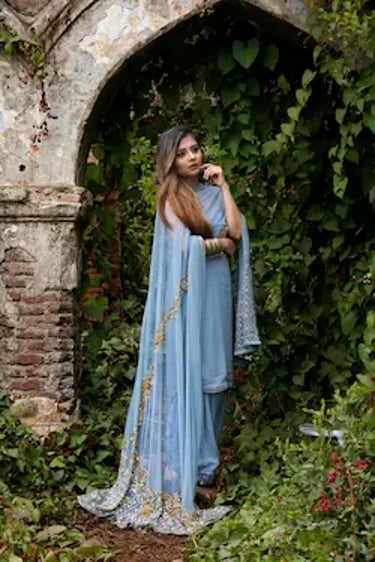
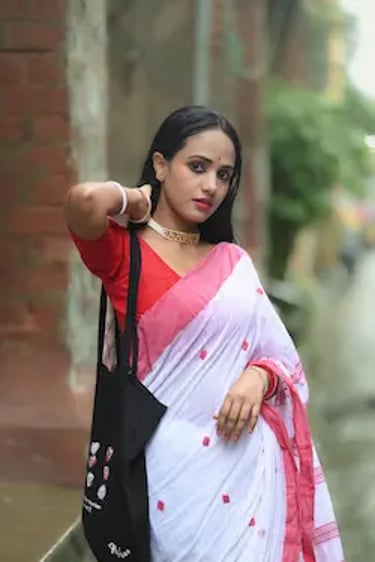
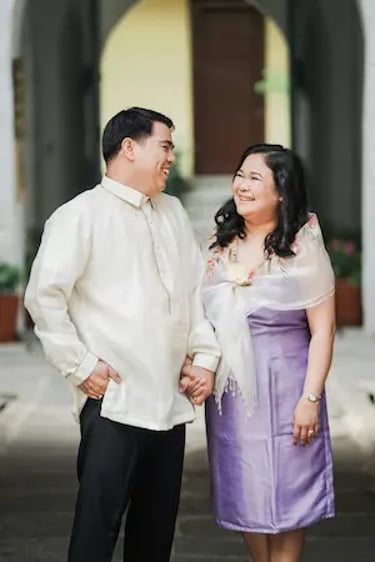
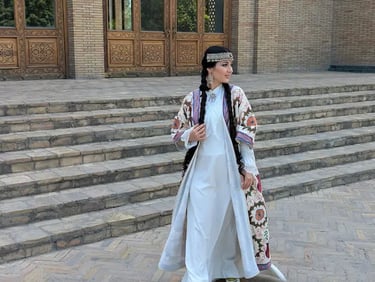

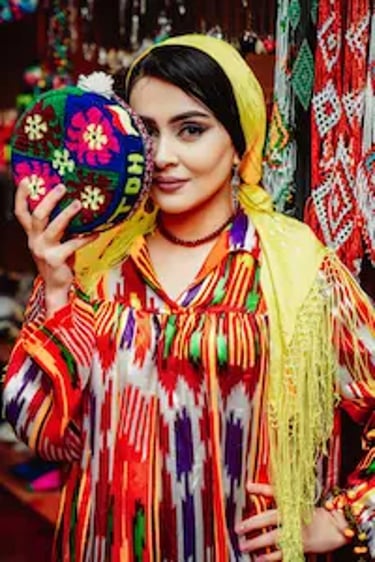
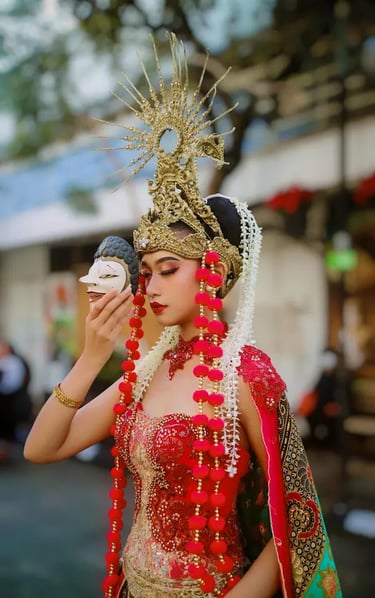
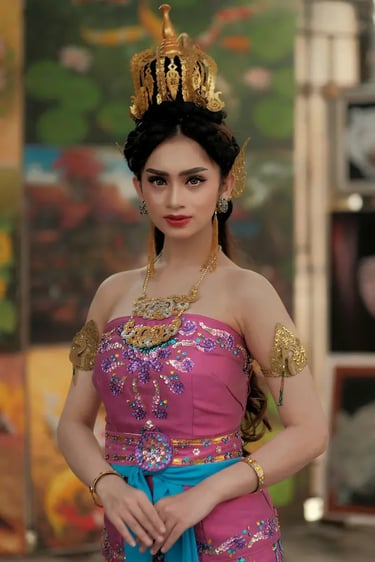








FAQ: Traditional Costumes and Fashion Inspirations
What pants can you wear to modernize a traditional Asian costume?
Loose, flowing pants in linen or viscose pair beautifully with traditional tunics. For a more modern look, high-waist trousers, slim fits, or straight cuts in checked or floral prints can add energy to the outfit. A plain pair of jeans also works well for a relaxed, everyday wardrobe.
How can you integrate prints inspired by traditional Asian costumes into your wardrobe?
Floral, polka dot, or striped patterns often echo traditional motifs. A printed shirt or tunic can be paired with a wide skirt or a plain suit. For a more boho look, opt for floral or fantasy prints, perfect for women’s fashion that feels both modern and feminine.
What fabrics should you choose to reinvent a traditional costume?
Satin, velvet, crepe, and knitwear are timeless fabrics that pair well with Asian-inspired cuts. For a casual style, choose fluid linen or lightweight viscose. In beige, navy blue, khaki, or plain tones, these materials suit all body types. For a more refined effect, embroidery, asymmetrical details, or fitted cuts can highlight the waist and hips.
How can women wear traditional clothing in everyday life?
A loose or fitted tunic can be modernized with slim jeans or a high-waisted skirt. For a casual look, pair it with a tank top, an oversize sweater, or a plain tee-shirt. As for shoes, sandals, ankle boots, or heels can shift the outfit from bohemian to feminine chic.
Can a traditional costume be styled with modern pieces like a T-shirt or shirt?
Absolutely! A plain, striped, or floral T-shirt, or even a fluid tank top, works perfectly under a traditional jacket or with a sarong. A button-down shirt with short sleeves, a blazer, or a sweater can also be added. Depending on the cut, the outfit can go from casual with sneakers to chic with heels.
Which styles work best for all body types and plus sizes?
Flowing and straight cuts are ideal for all body types, including plus size. Dresses and tunics with a round neckline or a modest décolleté flatter the figure. Fitted pieces define the waist, while oversize or asymmetrical cuts create a modern, relaxed look. Floral or fantasy prints add a timelessly feminine touch.
What tops can you wear with traditional Asian outfits?
Traditional tunics or kimonos pair beautifully with modern tops such as knit sweaters, sleeveless camis, or long-sleeve blouses. A scoop-neck or V-neck top in chiffon or woven fabric adds elegance, while striped or floral-print pieces give a casual twist.
How can skirts be styled with traditional-inspired clothing?
Pleated skirts, maxi skirts, or even denim skirts are versatile to wear with kimono jackets or embroidered tops. A ruffle detail or peplum cut can enhance a feminine silhouette, while plaid or striped skirts bring a modern touch to more classic outfits.
Can traditional gowns and dresses be adapted for women’s fashion today?
Absolutely! A sari-inspired gown in ivory chiffon or a kebaya-style dress can be worn for weddings or formal events. Off-the-shoulder or cold-shoulder cuts, lace-up details, and crochet or paisley fabrics can modernize traditional outfits while keeping a feminine essence.
What jackets or cardigans go well with Asian-inspired looks?
Kimono jackets, woven blazers, and lightweight cardigans pair seamlessly with skirts, leggings, or skinny jeans. Long-sleeve sweaters in knit fabric also complement traditional tops for a balanced outfit that works for both casual and chic occasions.
How do you combine traditional attire with modern bottoms like jeans or leggings?
Skinny jeans, denim pieces, or leggings are perfect to wear with flowing tunics or kimono-style tops. Flared cuts, plaid pants, or even lace-up trousers create a bold mix of old and new. For womens outfits, pairing floral-print tops with denim or ivory pants achieves an elegant yet modern look.
Which neckline styles modernize traditional Asian costumes?
V-neck and scoop-neck cuts are flattering and easy to wear with woven tops or chiffon blouses. Off-the-shoulder or cold-shoulder designs add a contemporary twist, while ruffle details, peplum styles, or pleated textures give traditional-inspired outfits a chic update.
Travel
Asia Blog – Practical tips about Vietnam, Thailand, South Korea, Cambodia... visas, eSIMs, banking, travel budget, and more.
© 2025. All rights reserved.
